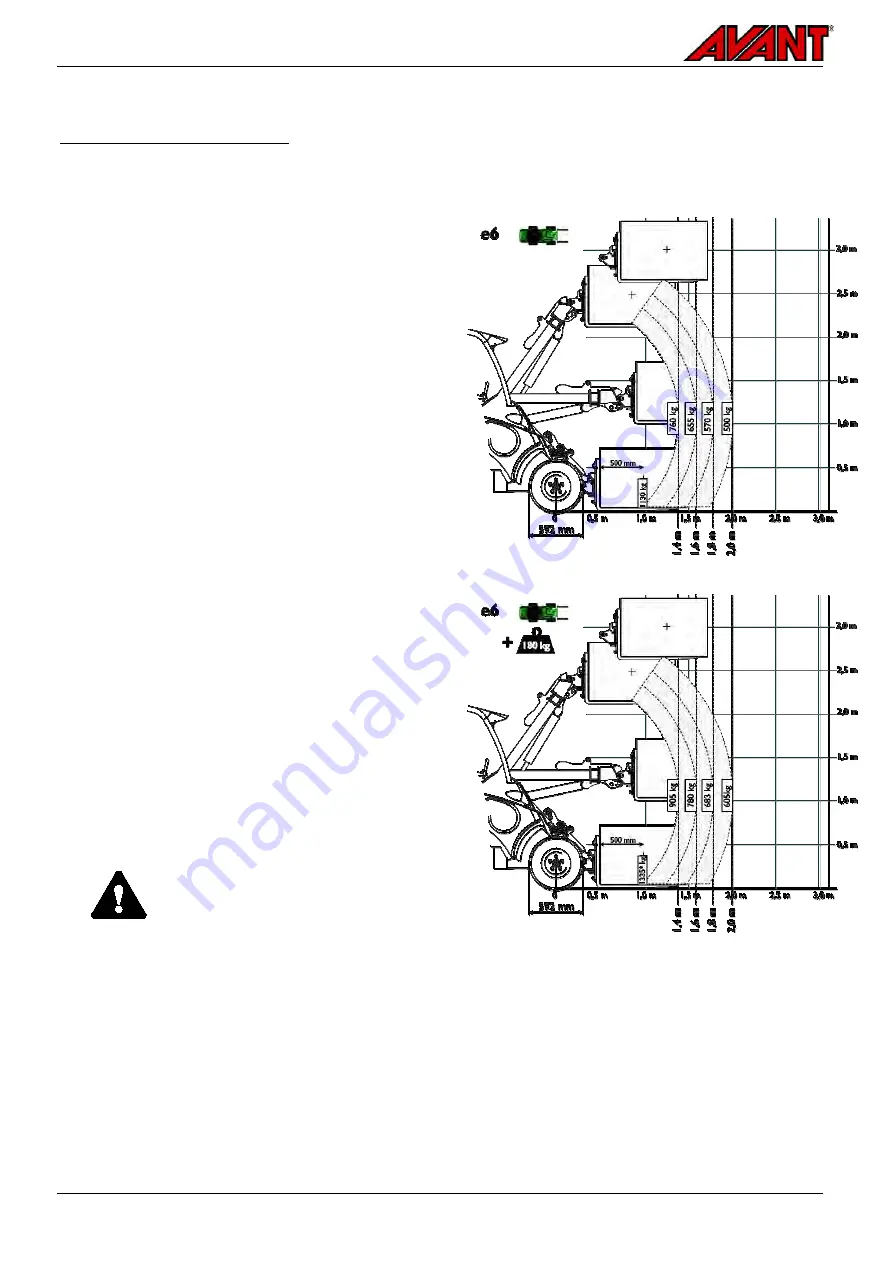
Avant e6
34
.
Tipping load - Load chart
.
..
The load charts help you to estimate the weight of
the load that can be lifted with the loader without
tipping over on firm, stable ground. They describe
the loads that can be handled with pallet forks at
different positions of the loader boom.
When the load is lifted off from the ground, the loader
boom moves further away from the loader,
decreasing the stability of the loader. At the
horizontal position of the loader boom the load will be
the furthest away from the loader, and the tipping
load is the lowest. When the telescopic boom is
extended the tipping load is further reduced.
.
..
To read this type of load chart:
This type of load chart describes how the tipping load
changes as the load moves away from the loader
when moving the loader boom. It shows the possible
load with the telescopic boom fully retracted and
extracted, and at two points in between the extreme
positions of the boom.
As shown in the chart, a load of about 760 kg can be
lifted to a horizontal position, and therefore it can be
handled in any position of the loader boom. If the
telescopic boom is extended, the tipping load is
reduced down to 500 kg at the fully extended
position. A 1100 kg pallet can be lifted just off the
ground, but it can't be lifted higher.
The same information, with the information related to
the horizontal position (where the boom is the
furthest away from the loader) is also shown in the
ROC table and label on the loader.
WARNING
Avoid overloading the loader -
Know the load and the lifting
capacity of the loader.
Heavy
load can cause the loader to tip
over. The diagram is valid only on
firm and level ground, with the
conditions listed on page 33. The
load can exceed tipping load and
loader can tip over when you move
the loader boom to another
position.
.
Load chart - e6
Load chart - e6 - With extra counterweights








































